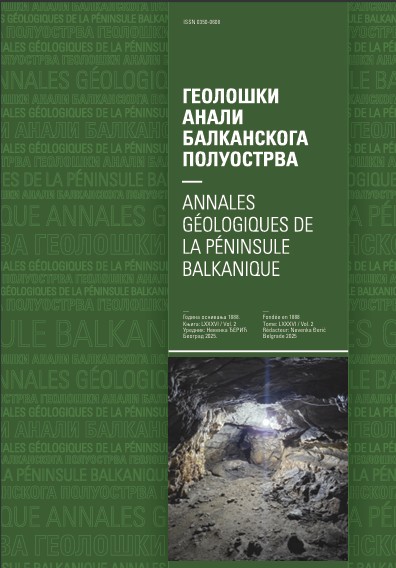Trans-border (south-east Serbia/west Bulgaria) correlations of the Jurassic sediments: Infra-Getic Unit
Abstract
The Infra-Getic Unit is a palaeogeographic unit, predestined by palaeotectonics. From the point of view of geological heritage, it represents a geosites framework. For the purpose of the correlation, the Serbian sections of Lukanja, Bogorodica Monastery, Rosomač and Senokos, as well as the Bulgarian sections of Komshtitsa, Gintsi, and Stanyantsi were used. The Jurassic sediments of the Infra-Getic Unit crop out on the southern slops of the Stara Planina Mountain in east Serbia and west Bulgaria. The Lower Jurassic started with continental and continental-marine sediments (clays and sandstones) (Lukanja clastics and Lukanja coal beds in Serbia and the Tuden Formation in Bulgaria) and continue with Lukanja quartz sandstones (Serbia) and the Kostina Formation (Bulgaria). These sediments are covered by Lukanja brachiopod beds and Lukanja limestones (Serbia) and the Romanov Dol, Ravna and Dolni Loukovit Members of the Ozirovo Formation (Bulgaria) predominantly consist of bioclastic limestones. The sedimentations follow with Lukanja belemnites-gryphaea beds (marls and clayey limestones), which in Bulgaria correspond to the Bukorovtsi Member (also marls and clayey limestones) of the Ozirovo Formation. The Middle Jurassic sedimentation started with black shales with Bossitra alpine. These sediments are individualized in Serbia as Senokos aleurolites and clays and in Bulgaria they are known as the Etropole Formation. In Serbia the section continues with sandstones called Vodenički sandstones of Bajocian age, known in Bulgaria as the Dobrogled Member of the Polaten Formation. However, in Bulgaria, the age is Upper Bajocian-Lower Bathonian, and it cover the marls of the lower member (Gornobelotintsi Member) of the Bov Formation and is covered by the upper member - alternation of marls and clayey limestones - the Verenitsa Member of the Bov Formation. The Vodenički sandstones-Dobrogled Member which ended their distribution in the section of Komshtitsa, to the east (in the Gintsi section), they are not represented - build a body of sandstones, a prodelta coming from the west to the east. The Bov Formation corresponds to the Senokos ammonite beds in east Serbia. The upper boundary of the Senokos ammonite beds and of the Bov Formation is sharp. It is covered by grey limestones of the Yavorec Formation in Bulgaria and by the Kamenica limestones in eastern Serbia. They are covered by grey or red nodular/lithoclastic limestones ("ammonitico rosso" type) of the Gintsi Formation in Bulgaria and the Pokrovenik ammonitic (acanthicum) limestones in Serbia. The Jurassic section in the Infra-Getic ended with grey micritic and lithoclastic limestones, which belong to the Rosomač and Rsovci limestones in east Serbia and to the Glozhene Formation in Bulgaria.
Copyright (c) 2006 Geološki anali Balkanskoga poluostrva

This work is licensed under a Creative Commons Attribution 4.0 International License.










